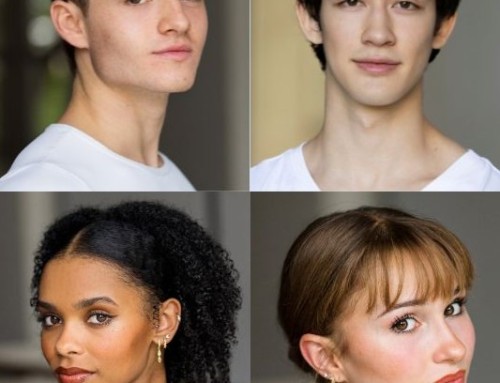Mark Zappone on Designing the Costumes for Bacchus
Costume designer Mark Zappone has created many costumes over the years for PNB, including for Matthew Neenan’s Bacchus. Peek behind the scenes with us today on the PNB Blog as Mark explains how he created these delightful costumes!
Working with Neenan felt natural for Mark. He says, “I worked with Matthew Neenan before, so there was a sense of freedom while working on this project. He was with us throughout the whole process of creating Bacchus, which was so great. While Matthew was here, rehearsing the ballet in the studios (which is fantastic that PNB can do that), I would put something new on the mannequin every day and show him another interpretation of the costumes.”
Together, Mark and Neenan sought to create costumes that embodied the joy associated with wine while remaining refined and elegant. This helped them establish the color palate of the ballet. “We came across purple because I had a piece of purple fabric I liked. Also, Bacchus is the celebration of wine and the festivities around that. We played with plum and purple and went with grape towards the end.”
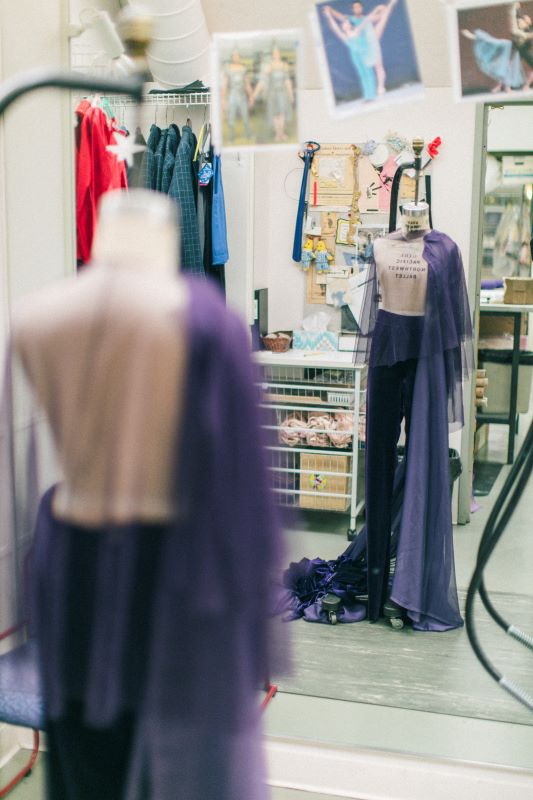
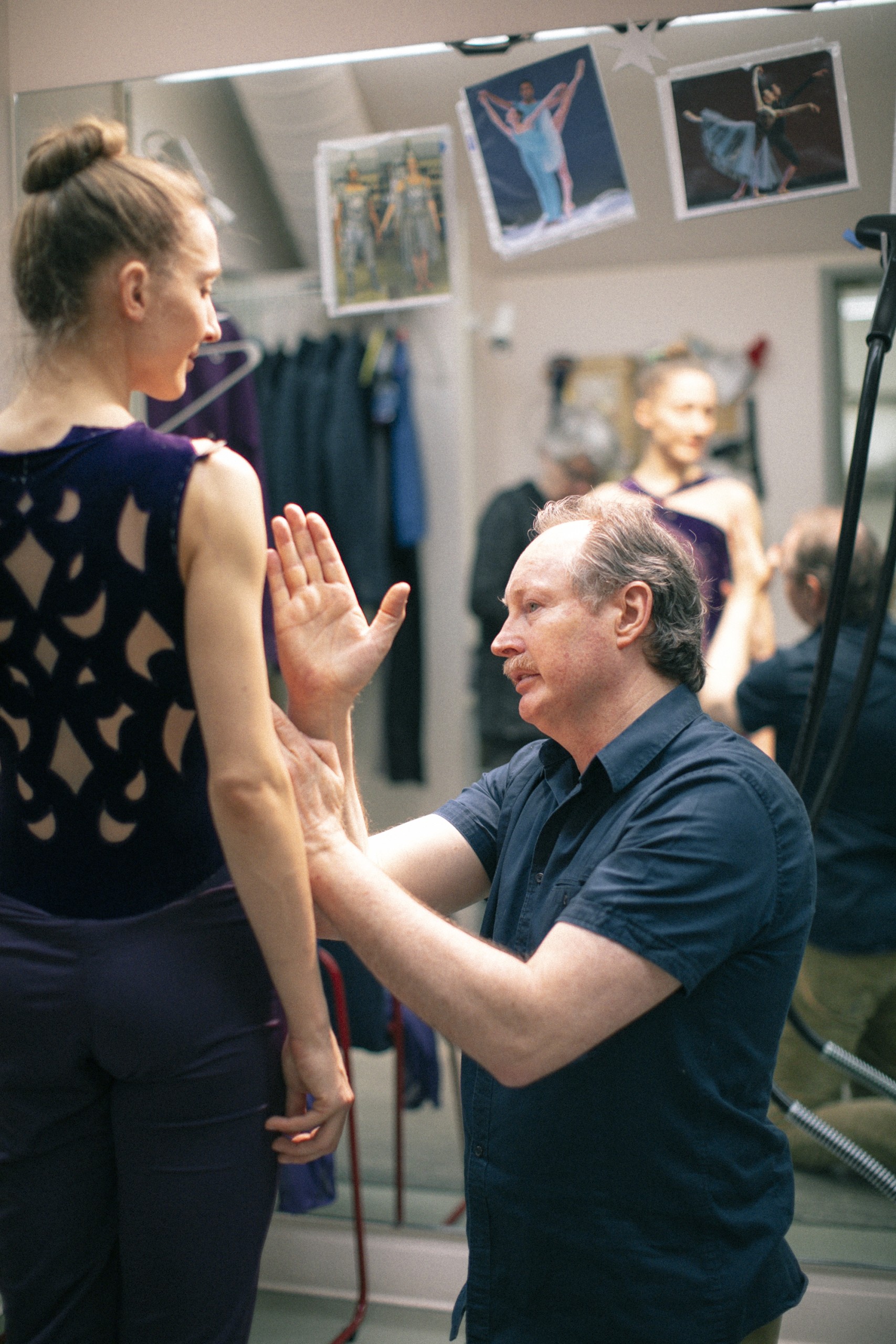
It was important for Mark to establish the dancers as both a cohesive group and individuals. “I decided that all the pointe dancers would have the same back and fronts of their costumes, and then we would give them various pants, a long skirt, or a short skirt, all with different fabrics. They still worked well together as a group, even though they were individuals.” The backs of this set of costumes consist of a unique, trellis-like design; the fronts have a high neckline and velvety purple accents running down the sides of the torso. With flowing skirts and long pants, the costumes are elegant yet playful.
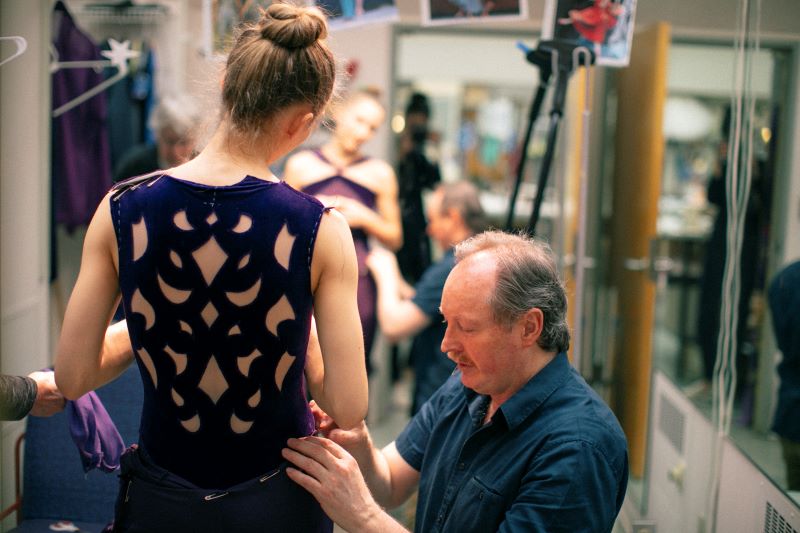
The flat shoe dancers’ costumes exemplify how Mark approaches movement in his costume design. He says, “I always feel shirts have to move, so we ended up just closing them at the top of the neck, and each costume has a cluster of grapes at the neck.” He also used a georgette fabric for the shirts, which allowed them to float and breathe with the dancers. Mark is “always trying to find what enhances the dancers’ movement and carries it on. The flat dancers ended up wearing a half-kilt because I had a purple plaid fabric I wanted to use. When the dancers turn, that fabric continues the movement.”
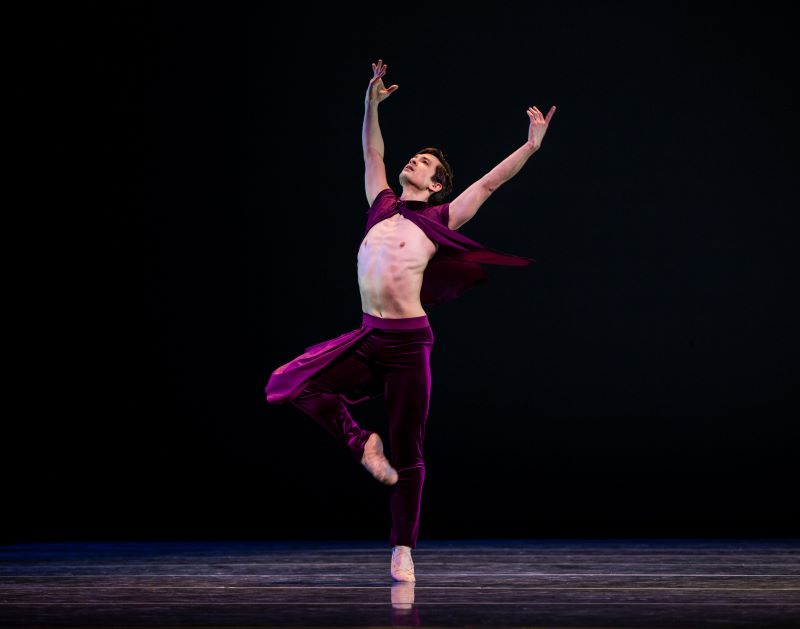
For both flat and pointe dancers, Mark values how they feel in the costumes. “Nothing is more pleasing than pleasing a dancer when they look in the mirror. I’m concerned about their vision of themselves. I always ask them, you know, “How do you feel? Do you feel better if this line is there?” Sometimes, it’s just a matter of moving something a small amount, and then they feel better. That’s so important because then they can dance well because they feel comfortable.”
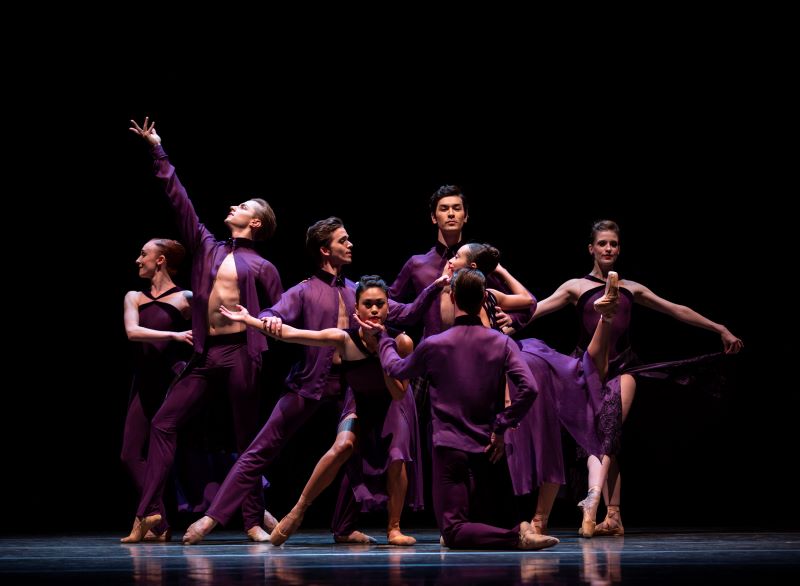
So much goes into creating a ballet, from choreographing steps to designing the costumes. Seeing a new work on stage is a special feeling for the audience and a unique experience for the creative team. Mark says, “It’s fantastic to start on a project, and then it becomes better than you could ever imagine. You get to see the lights shimmering off of it on stage, and that’s a wonderful feeling.”


